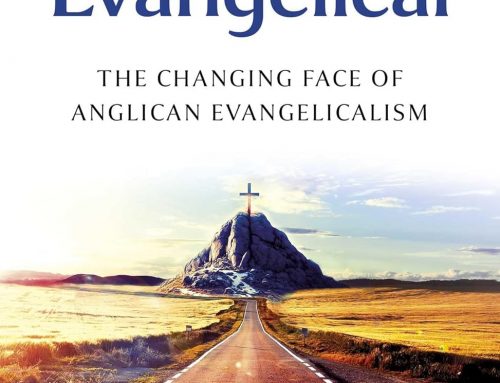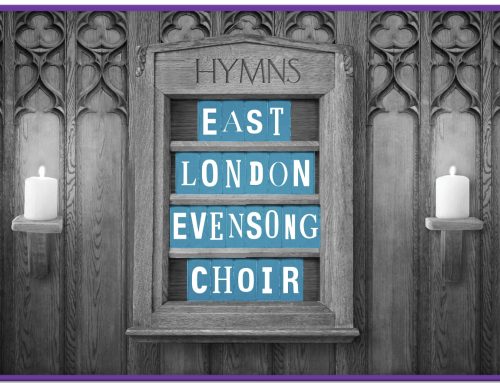Be careful what you venerate
Be careful what you venerate.
 Editorial: The Rev’d Dr. Nicholas Henderson – Editor, Anglicanism.org
Editorial: The Rev’d Dr. Nicholas Henderson – Editor, Anglicanism.org
The arrival in Lichfield Cathedral, England, of a fragment of a bone of St Chad (died 672) will be marked by the recreation of a shrine in his name and the opportunity for pilgrims to donate a much-needed £10.00 by texting.[i] After centuries following the original shrine’s destruction, more protestant precursors may be turning in their respective graves but this exercise is a sign of a human tendency to venerate and cherish worthies of bygone ages who may easily be recreated in the image of the pilgrims of the present.
The phenomenon isn’t confined to the strictly sacred as almost at the same time the bones of Prince Grigory Aleksandrovich Potemkin-Tauricheski (1739-1791) have been exhumed from St Catherine’s Cathedral in the newly abandoned and now liberated Ukrainian city of Kherson. Potemkin’s remains have been moved on the orders of Russian President Vladimir Putin across the Dnipro River and further into Russian-held territory, along with a statue of the military leader.[ii] This is the ninth time his bones have had a change of scene!
Potemkin was Catherine II’s (Catherine the Great) principal lover, possibly her morganatic husband and certainly a lifelong trusted advisor. He lent his name to the famous supposedly fake Potemkin Villages and to the Battleship Potemkin, whose sailors would later play a crucial and ironicaly anti-monarchist role in the Russain Revolution of 1905. Importantly, from Putin’s point of view, Potemkin also played a critical role in thje annexation of Crimea from the Turks in 1783, and his memory is central to those in Russia intent on restoring the country’s former imperial reach. Putin largley leaned on this legacy in order to justify his annexation of Crimea in 2014. For his efforst Potemkin was awarded the rank of field marshal and later went on to found the city of Sevastopol in Crimea, making it the main Russian naval base on the Black Sea. Potemkim was an absolutist ruler in Catherin’s name founding several other Ukrainiam cities including Kherson.
These Ukrainian/Russian bones are destined for a somewhat different purpose than the ecumenical and devotional purposes of St Chad’s latest resting place. Nevertheless, Christianity, including the Russian Orthodox variety, so beloved both by Potemkin and Putin, is no stranger to using relics and revisionist history to justify political and military objectives.
Beyond bones but certainly touching the area of intense religious devotion the contentious establishment of the American Embassy in Jerusalem in 2017 by the then President Donald Trump and thereby effectively recognising Jerusalem rather than Tel Aviv as Israel’s capital was another example of a heady mix of politics and religion. This move in turn created violent unrest in Gaza and accusations of a jeopardising of hopes for a Middle East peace. Rishi Sunak, the new UK prime minister has wisely reversed the controversial plans of his 49-day premiership predecessor Liz Trust to follow Trump’s example.
Ecclesia semper reformanda (Latin for ‘the Church must always be reformed’) might be called for at this moment? Apart from touching the admittedly deep spiritual needs of believers to have a physical association with what is by definition the past (a purely cerebral approach to the faith requires quite a sustained effort) there might be something both useful and dangerous in venerations of the great and good worthies of ecclesiastical history. That is to say, useful as a tool of evangelisation and dangerous in the creation of shibboleths. A dictionary definition of this latter is a custom, principle, or belief distinguishing a particular class or group of people, especially a long-standing one regarded as outmoded or no longer important. Shibboleth is a Hebrew word that means “ear of corn” or “flood.” In a Biblical story, the word was used as a password – a means to discern who was part of your group and who wasn’t. It still has that sense of identifying someone as a member of a group.[iii]
Hence, we come nearer to a contemporary understanding the nature of not only religious divisions but also in a more immediate Anglican context. The seemingly intractable standoff over same-sex attraction is a good example. The recent American election was indisputably hostage to the narrow views of the ‘Evangelical Right’ including this and the issue of abortion. Anglicanism, apart from schismatic groups such as The Anglican Church in North America (ANCA) and its satellites, has broadly speaking taken a much more liberal view, laced disappointingly in the Church of England with tedious obfuscation. In this case and unfortunately, most of the worthies of the past do little in the way of advancing the Church to a serious solution. In fact the embarrassing number of historic Anglican philanthropists with commemorative statues in need of careful explanation regarding their involvement with the slave trade shows us that moral virtues are fluid and the mores of one generation may not match the ideals of another. In this we are engaged in a constant struggle to emulate the life and teaching of the poor carpenter from Nazareth who we follow as Lord and Saviour.
In the meantime as recently as pre-Covid Christmas 2017 it appears that St Nicholas’ (270-343) bones, like those of Potemkin have been on the move again. Originally deposited on the island of Gemile, then in Myra in today’s Turkey, then plundered by Venetian sailors and taken to Bari, Italy and later deposited the church of San Nicolò al Lido in Venice. On the way fragments went in all directions, including latterly one for analysis at the intriguing named ‘Oxford Relics Cluster at Keble College’s Advanced Studies Centre.’[iv]
Potemkin is something of a revered legend in Russia but St Nicholas even more so as one who by his intercession it is believed has frequently saved Russia from catastrophe. In the West (fighting what is in effect a proxy war on behalf of bombed, battered and bullied Ukraine) in his modern incarnation as Santa Claus or Father Christmas he remains one of the best known and most loved of venerated Christians whose reach has contributed to goodwill or at least aspirations to it.
How ironic that two brutally warring sides have so much in common. Perhaps after all the remains of a godly saint might, just might, have a universal appeal for the better – could the Church in its various expressions have a louder voice in peacemaking?
Nicholas Henderson
Editor: Anglicanism.org
Kingdom Season 2022
[i] https://www.lichfield-cathedral.org/st-chad/st-chad
[ii] https://edition.cnn.com/2022/10/28/europe/potemkin-remains-removed-kherson-ukraine-russia-intl/index.html
[iii] The modern use of shibboleth derives from an account in Judges 12 vv 5-6 in which pronunciation of the word was used to distinguish Ephraimites, from the Gileadites whose dialect used a differently sounding first consonant. Forty-two thousand Ephraimites lost their lives as result!
[iv] https://www.scotsman.com/whats-on/arts-and-entertainment/fragment-bone-could-belong-real-father-christmas-1435661





